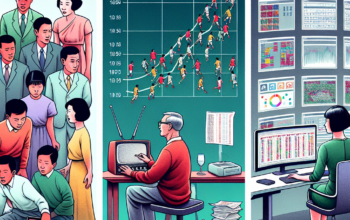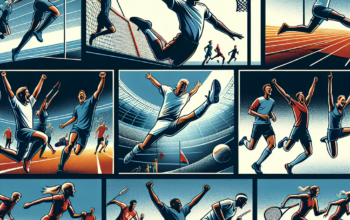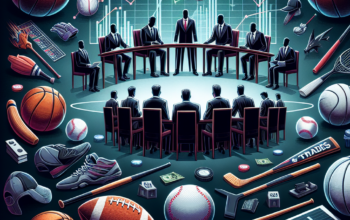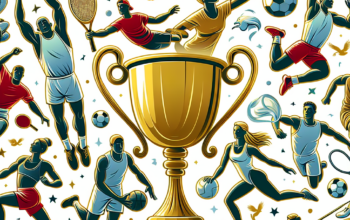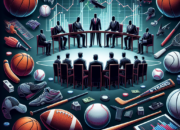Introduction
Football, a sport that transcends borders and cultures, is often defined by its fierce rivalries. When passion fuels competition, the intensity of the game reaches a boiling point, resulting in moments that fans cherish and remember for a lifetime. From historic clashes to on-field altercations, these iconic rivalries shape the narrative of football. In this article, we will delve into the most significant football rivalries of 2025, exploring how they ignite passion, stir emotions, and sometimes, how they manifest in more than just the scoreline.
Section 1 Heading (The Most Intense Rivalries in Football)
The intensity of football rivalries is unparalleled, and some of the most storied encounters pit clubs and nations against one another in battles that often feel larger than life. One such example is the El Clásico, featuring FC Barcelona and Real Madrid. The significance of this rivalry, which has spanned generations, lies not only in the footballing prowess of both teams but also in the cultural and political undertones that accompany each match. As of 2025, El Clásico remains a paramount event in the football calendar, with the matches often boasting millions of viewers worldwide. The stakes are high, as these two clubs vie for superiority both on and off the pitch.
Adding to this drama, the Milan Derby (Derby della Madonnina) showcases the fierce competition between AC Milan and Inter Milan. Dominating Serie A, these two clubs embody the heart and soul of Italian football. The electric atmosphere during these matches reflects a rivalry that transcends mere sport; it’s a battle for pride, history, and local bragging rights. The cities of Milan and Barcelona become electric with anticipation, as fans gear up for these high-stakes derbies, which often play pivotal roles in the title races of their respective leagues.
Section 2 Heading (International Rivalries: A Global Perspective)
While club-level rivalries are electrifying, international competitions often exacerbate tensions between nations, leading to some of the most iconic matches in World Cup history. The rivalry between Brazil and Argentina has produced exceptional encounters that embody the spirit of South American football. With their rich histories and passionate fanbases, matches between these two footballing giants are often referred to as the “Superclásico of South America.” The stakes soar every time these two teams meet, with players and fans alike understanding the importance of national pride in each battle.
Another significant international rivalry is the historical clash between England and Germany. From World War II to the memorable penalty shootout in the 1990 World Cup, the clashes between these footballing powerhouses layer the matches with a historic significance that captures worldwide attention. The 2022 World Cup, despite occurring a few years ago, rekindled this rivalry and set the stage for a much-anticipated rematch in the 2026 World Cup qualifiers. With both nations producing world-class talent, every encounter poses the questions: Who will secure the upper hand, and will history repeat itself?
Section 3 Heading (Rivalries That Fuel Social Discourse)
Football rivalries often extend beyond the pitch, influencing social discourse and collective identity. This phenomenon is starkly evident in the fiercely contested matches between Celtic and Rangers, known as the Old Firm derby. Based in Scotland, this rivalry is entrenched in historical and religious contexts, influencing football culture and even societal structures within the region. As of 2025, the tensions surrounding this particular rivalry remain palpable, with each match viewed as a reflection of cultural identity.
The Old Firm matches are famously intense, not only due to the historical background but also because of the local and global context they inhabit. Fans travel from far and wide, embodying their teams’ ethos while simultaneously igniting discussions on broader societal issues. Thus, these encounters represent more than mere sporting events; they serve as a stage for cultural expression and community solidarity.
In addition to the Old Firm, the Catalan independence movement has intensified the rivalry between Catalonia’s FC Barcelona and Spain’s national team. As Barcelona becomes a symbol of Catalan pride, the narrative surrounding matches against clubs representing Spain often carries political undertones, making the stakes feel incredibly high. In 2025, as Catalonia continues to navigate its political aspirations, these football matches hold significant relevance, fueling discussions about autonomy and identity beyond sport.
Section 4 Heading (The Role of Media in Heightening Rivalries)
In the 21st century, the role of media in shaping and intensifying football rivalries can’t be overstated. Social media has transformed how fans interact, thereby amplifying emotions surrounding major fixtures. Platforms like Twitter, Instagram, and TikTok have become stages for rival banter, where fans share memes, highlight reels, and emotional reactions in real time. This constant cycle of engagement contributes to an environment where rivalries are not only maintained but also magnified.
Moreover, traditional media—television and radio—still plays a crucial role in the buildup to matches. By painting dramatic narratives and fueling speculation about team line-ups, injuries, and managerial decisions, media outlets keep fans engaged and the tension high. Leading up to an intense fixture such as the Manchester Derby in 2025, discussions around tactical approaches, player conditions, and even interpersonal relationships between players have become a focal point in sports journalism. The buzz generated influences fan expectations and adds layers of anticipation, often leading to heightened emotions as they approach match day.
Furthermore, documentaries and special features dedicated to football rivalries also play an important role in shaping public perception. Films such as “The Fever Pitch” and ESPN’s “30 for 30: The New York Cosmos” dive deep into the cultural significance of these rivalries, providing insights that engage both die-hard fans and casual viewers. By showcasing the historical context and emotional narratives behind these matches, media continues to ensure that the drama and intensity of rivalries remain at the forefront of football culture.
Section 5 Heading (Future Trends in Football Rivalries)
As we peer into the future of football rivalries, it’s evident that technology will continue playing a transformative role in how these competitive narratives develop. With virtual reality and augmented reality, fans are on the brink of experiencing matches in unprecedented ways, virtually stepping into the stadium and feeling the electrifying atmosphere. By 2025, innovations like VR match viewing experiences will likely allow fans to feel the intensity of rivalries from anywhere in the world, making these fierce contests more engaging than ever.
In addition, fan engagement platforms are expected to revolutionize how supporters connect with clubs and each other. With the rise of decentralized platforms allowing fans to democratize their voices, we anticipate a more significant impact of grassroots movements on football culture. In 2025, clubs might find themselves balancing the desires of global fans with local traditions, reshaping the dynamics of rivalries in the process.
Moreover, understanding the implications of climate change and sustainability initiatives will also redefine fans’ experiences and rivalries. With clubs increasingly focused on reducing their carbon footprints, rivals may soon be competing not just on the pitch but also in terms of sustainability. Consequently, the measures clubs adopt to address these issues could alter the rivalry landscape, leading to new narratives based on values and community engagements.
Conclusion
Football’s iconic rivalries are a testament to the passion and emotional depth embedded within the sport. From historical narratives to present-day clashes, fans are continually engaged by these legendary encounters. In 2025, we see these rivalries evolve, influenced by culture, technology, and societal movements. As clubs and nations gear up for their most intense battles, the boiling point of football rivalries will undoubtedly deliver moments of magic and chaos that captivate fans around the globe.
FAQs Section
What are the most famous football rivalries in history?
Some of the most famous rivalries include El Clásico (Barcelona vs. Real Madrid), the Manchester Derby (Manchester City vs. Manchester United), and the Old Firm Derby (Celtic vs. Rangers).
How do football rivalries impact fan culture?
Football rivalries can significantly shape fan culture by fostering community, identity, and social interaction. They encourage passionate support and can lead to intense emotions, both positive and negative, during match days.
What role do media and technology play in football rivalries?
Media and technology amplify the passion surrounding football rivalries by providing platforms for fan engagement, real-time updates, and dramatic narratives that enhance the excitement leading up to matches.
How are football rivalries evolving in the 21st century?
In the 21st century, football rivalries are evolving through advancements in technology, changes in fan engagement, and the increasing influence of sustainability initiatives and social issues on how clubs and fans interact.

